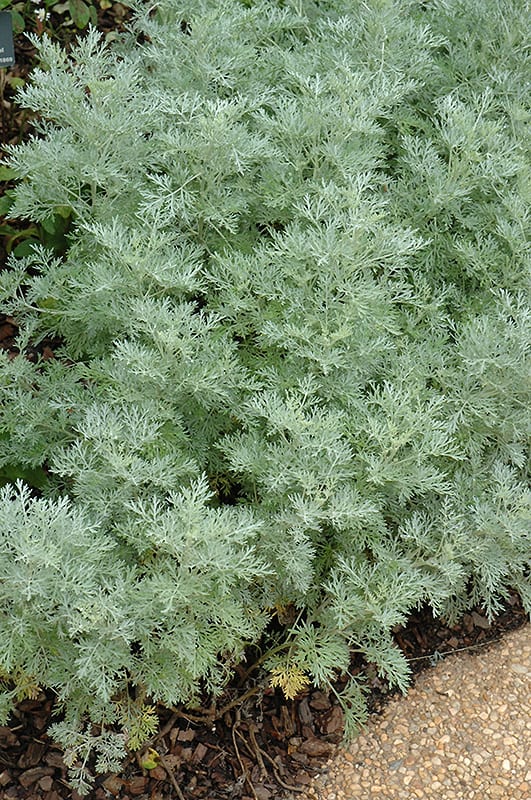Powis Castle Artemesia
Beautiful lacy silver foliage is valued for its texture and wonderful scent; this native plant attracts wildlife and is resistant to deer; does best in poor, dry soils, an ideal groundcover for adverse conditions where little else will grow.
Please contact your local store for product availability.
Find a garden center near you.
Other Species Names: Wormwood, Sage, Mugwort
Plant Height: 36 in.
Spread: 24 in.
Evergreen: No
Plant Form: upright spreading
Summer Foliage Color: gray green
Minimum Sunlight: full sun
Maximum Sunlight: full sun
Powis Castle Artemisia's attractive small fragrant ferny leaves remain grayish green in color throughout the season. Neither the flowers nor the fruit are ornamentally significant.
Powis Castle Artemisia is an herbaceous perennial with an upright spreading habit of growth. It brings an extremely fine and delicate texture to the garden composition and should be used to full effect.This plant will require occasional maintenance and upkeep, and is best cleaned up in early spring before it resumes active growth for the season. Deer don't particularly care for this plant and will usually leave it alone in favor of tastier treats. Gardeners should be aware of the following characteristic(s) that may warrant special consideration;SpreadingSelf-SeedingPowis Castle Artemisia is recommended for the following landscape applications;Mass PlantingGeneral Garden UseGroundcoverNaturalizing And Woodland Gardens
Powis Castle Artemisia will grow to be about 3 feet tall at maturity, with a spread of 24 inches. Its foliage tends to remain dense right to the ground, not requiring facer plants in front. It grows at a fast rate, and under ideal conditions can be expected to live for approximately 10 years.This plant should only be grown in full sunlight. It prefers dry to average moisture levels with very well-drained soil, and will often die in standing water. It is considered to be drought-tolerant, and thus makes an ideal choice for a low-water garden or xeriscape application. It is particular about its soil conditions, with a strong preference for clay, alkaline soils, and is able to handle environmental salt. It is highly tolerant of urban pollution and will even thrive in inner city environments. This particular variety is an interspecific hybrid. It can be propagated by division; however, as a cultivated variety, be aware that it may be subject to certain restrictions or prohibitions on propagation.

